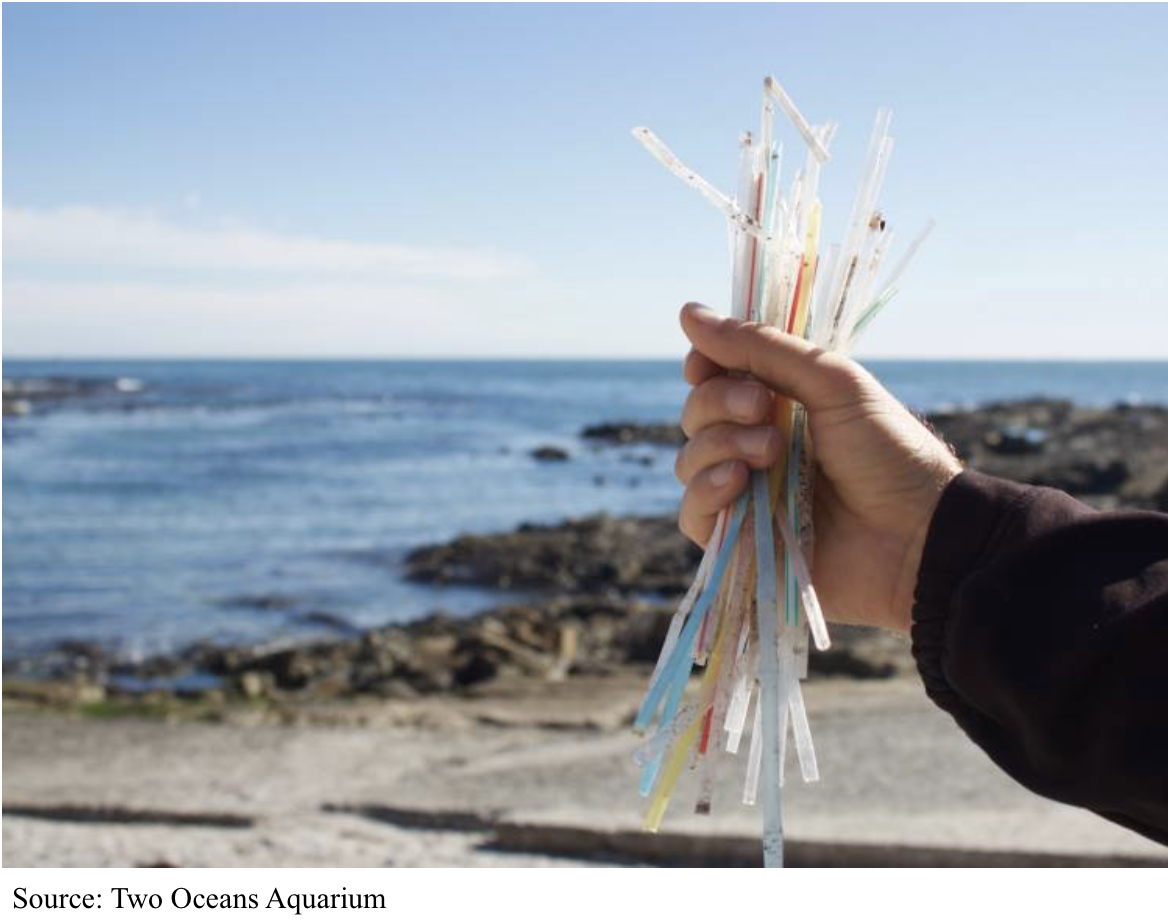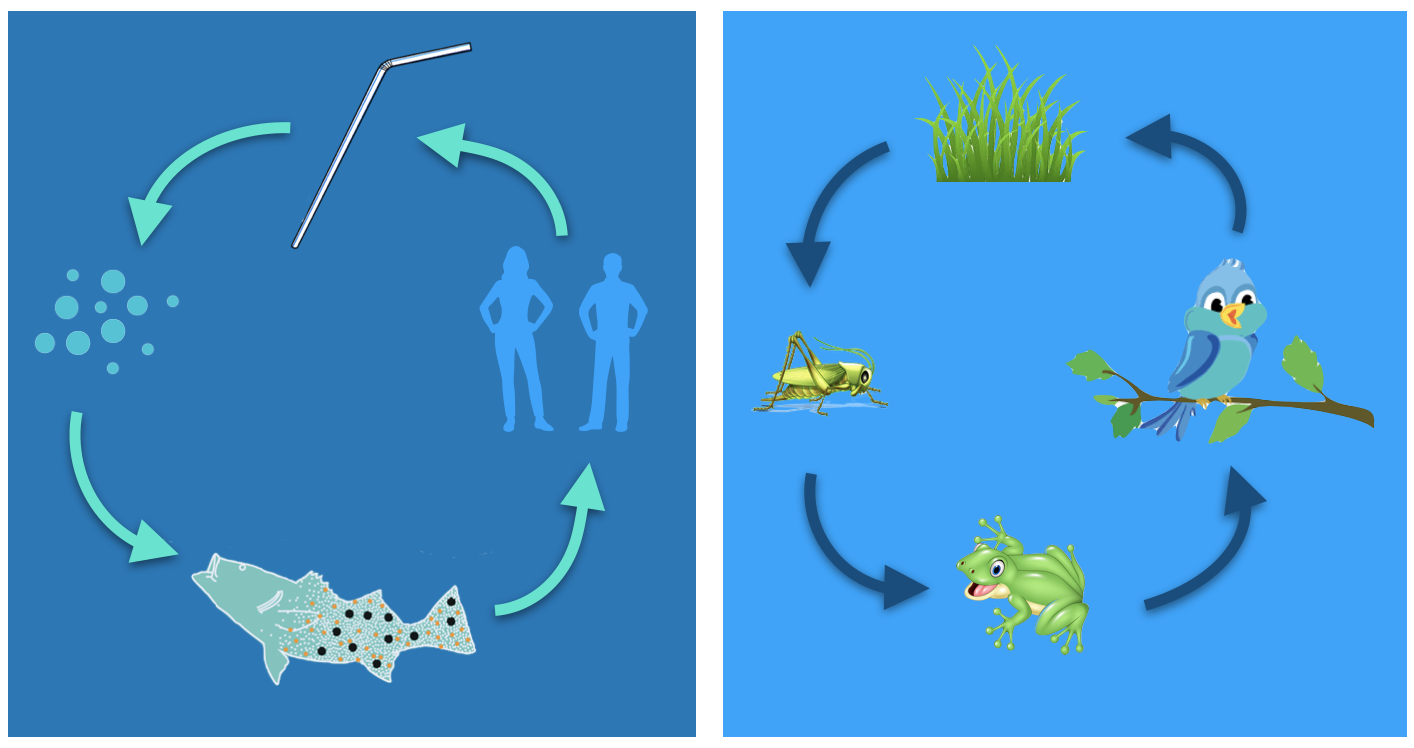It’s hard to imagine a time without straws, for 7,000 years people have been drinking out of straws. From fountain drinks to iced lattes, straws seem to be impossible to avoid. Since the 1960’s plastic straws have made up 99% of the straw market and straw alternatives made of glass and metal only making up 1%. It’s undeniable that sipping a nice cool beverage on a hot summer day can sometimes taste that much better coming out of a straw. But how would you feel about finding straws in the sand when you’re trying to build a sand castle or going for a dip in Lake Ontario? In 2017, straws and stir sticks were the 7th most commonly found item on beaches worldwide during the International Coastal Cleanup.

But why can’t straws be recycled? Isn’t all plastic recyclable? The majority of straws are made from polypropylene plastic. Polypropylene plastic is marked with a number 5 and it is recyclable. Straws, however, are often too small and fall through the conveyor belts and get lost in the sorting process. Another problem with straws is that they are often contaminated with sticky substances and even if they do end up being sorted, they are often discarded due to lack of cleanliness, quality, and quantity of plastic. It is also important to note that if a straw is dyed black, it can’t even go in the recycling bin because it has reached the end of its life cycle and is no longer a high-quality plastic, it has to go to the landfill.
So why is this a problem? In the United States alone 500 million straws are discarded daily and more than 1.8 billion each year. That’s about 1.4 million kilograms of plastic sent to landfills and into the ocean and waterways every day. That’s the equivalent weight of about 260 Asian elephants. In a recent interview conducted by CBC with the Ontario’s environmental commissioner, Dianne Saxe, she stated: “Unfortunately about 95% of the plastics that we use today do not get used again for an equivalent value.” Meaning that even if plastics are recycled, each time they turned into something new, the quality decreases and eventually have to go to landfill. Plastic can only be recycled so many times, unlike aluminum that has an infinite life cycle and retains its quality.
 Straws are one of the biggest single use plastics produced, and not only are we using them once, but they aren’t even being recycled. When plastic doesn’t get recycled, we all know it ends up in landfill, or worse in our ecosystems and environment. Some may even be incinerated which releases toxic chemicals into the air. The average time it takes for plastic to biodegrade is 1000 years, depending on the type of plastic and environmental factors. Not only does it take a long time for these substances to degrade, but where do they go once they degrade? We are taught in school that when plants and animals die they get broken down and recycled into nutrients that plants can use. The same thing happens with plastics, but unlike carbon matter, it is not beneficial to ecosystems. The majority of marine and freshwater plastics are considered to originate from land-based sources. When plastics are broken down, the tiny plastic particles, called microplastics, are broken off and absorbed into the environment and end up in our waterways and food webs. These microscopic pieces of plastic are being found in fish, mussels and other marine and freshwater species The accumulation of other freshwater contaminants on microplastics is of special interest because ingestion might increase the chemical exposure. So straws affect all aspects of our lives from the quality of our food to the health of our ecosystems to the quality of our air.
Straws are one of the biggest single use plastics produced, and not only are we using them once, but they aren’t even being recycled. When plastic doesn’t get recycled, we all know it ends up in landfill, or worse in our ecosystems and environment. Some may even be incinerated which releases toxic chemicals into the air. The average time it takes for plastic to biodegrade is 1000 years, depending on the type of plastic and environmental factors. Not only does it take a long time for these substances to degrade, but where do they go once they degrade? We are taught in school that when plants and animals die they get broken down and recycled into nutrients that plants can use. The same thing happens with plastics, but unlike carbon matter, it is not beneficial to ecosystems. The majority of marine and freshwater plastics are considered to originate from land-based sources. When plastics are broken down, the tiny plastic particles, called microplastics, are broken off and absorbed into the environment and end up in our waterways and food webs. These microscopic pieces of plastic are being found in fish, mussels and other marine and freshwater species The accumulation of other freshwater contaminants on microplastics is of special interest because ingestion might increase the chemical exposure. So straws affect all aspects of our lives from the quality of our food to the health of our ecosystems to the quality of our air.
So what can you do about it? Be aware of your consumption. Are the products you are buying single use or is there a way that it can be reused for another purpose? There are so many ways that simple changes can make a huge impact. When you’re out to eat simply ask your waiter not to bring a straw. Or you may not even have to do that for much longer. Quinte and Prince Edward County restaurants are making the switch. To find out more about which restaurants have made the change you can check out @StrawFreeQuintePEC on facebook to follow the movement! We understand that ditching the straw may be harder than expected but you’re in luck! There are lots of eco-friendly alternatives that you can use. The most common straw substitutes are steel, glass, bamboo or paper. Most paper straws can be put in the compost after use. If you’re looking for something more fun to try there are also seaweed straws and straws made of actual straw. The easiest way to make a big impact is through simple life changes you can make in your home. Conscious consumer choices are the key to a straw free future!
